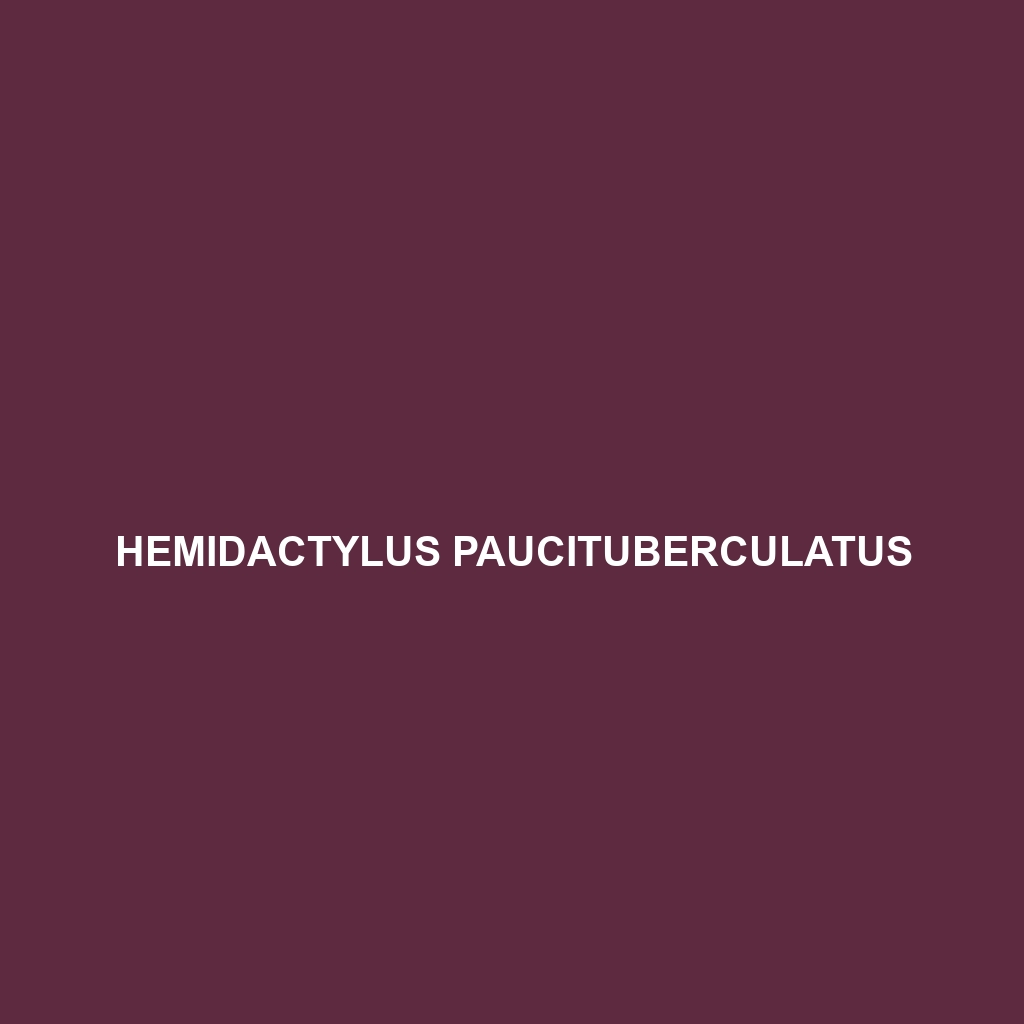Common Name
Hemidactylus paucituberculatus
Scientific Name
Hemidactylus paucituberculatus
Habitat
Hemidactylus paucituberculatus is predominantly found in tropical regions, specifically in parts of Southeast Asia. This species thrives in environments characterized by humid, warm climates, including dense rainforests, coastal mangroves, and sometimes in human-modified areas such as gardens and urban environments. The geolocation of these habitats often features significant rainfall and elevated temperatures, providing perfect conditions for this adaptable gecko. The combination of vertical structures like trees and shrubs in rainforests supports their need for foraging and shelter, while the open spaces in savannas allow for basking in the sun during the day.
Physical Characteristics
Hemidactylus paucituberculatus can be identified by its distinctive physical traits. Adult geckos typically measure between 5 to 7 inches in length, with a slender body conducive for climbing. The skin is covered in small tubercles, giving it a slightly textured appearance. Its coloration varies from light brown to gray, often with darker spots or stripes that serve as camouflage against bark and foliage. One of its notable features is its adhesive toe pads, which allow it to navigate vertical surfaces with ease. Unique morphology includes a long, slender tail that aids in balance and can regenerate if severed.
Behavior
Notably Hemidactylus paucituberculatus exhibits nocturnal behavior, making it most active at night. This gecko utilizes its excellent night vision to hunt for insects and avoid predators. During the mating season, male geckos engage in specific courtship rituals that include vocalizations, head-bobbing, and displays of body color changes to attract females. Social interactions can also be observed in communal sleeping sites or basking during the day, emphasizing their adaptability to cohabitate in shared environments. Territorial disputes can occur among males, often involving displays rather than aggressive confrontations.
Diet
As an insectivore, Hemidactylus paucituberculatus primarily feeds on a variety of small insects, such as crickets, moths, and other arthropods that are abundant in their preferred habitats. Their diet is supplemented with the occasional fruit or nectar, enabling them to exhibit some omnivorous tendencies during specific seasons when other food sources are less available. Their foraging behavior usually involves hunting on vertical surfaces or under leaf litter, where they can silently approach their prey with agility.
Reproduction
The reproductive cycle of Hemidactylus paucituberculatus typically begins in the warmer months, with mating occurring shortly after the rainy season. Males are known to vocalize during courtship to attract females. A typical gestation period lasts about 4 to 6 weeks after mating, with females laying two eggs per clutch. These eggs are usually deposited in hidden locations, such as under loose bark or in crevices, to protect them from predators. Once hatched, juvenile geckos exhibit independent behavior from an early age and begin to feed on small insects.
Conservation Status
The conservation status of Hemidactylus paucituberculatus is currently classified as Least Concern by the IUCN, indicating a stable population across its natural habitat zones. However, habitat destruction due to urban expansion and deforestation poses potential threats to its populations. Conservation efforts focus on habitat preservation, establishing protected areas, and public awareness programs to reduce human impact on their ecosystems.
Interesting Facts
One unique characteristic of Hemidactylus paucituberculatus is its ability to climb smooth surfaces, thanks to its finely adapted toe pads that create a strong adhesive force. Additionally, this species can display interesting physiological traits, such as changing color slightly in response to temperature variations, which helps with thermoregulation. Their resilience allows them to thrive in both pristine and altered environments.
Role in Ecosystem
Hemidactylus paucituberculatus plays a crucial role in its ecosystem by functioning as a natural pest control agent, preying on a variety of insects that can be harmful to plants and livestock. These geckos serve as a food source for larger predators, reinforcing the balance of the food web. Moreover, by aiding in the regulation of insect populations, they also contribute to the overall health of their habitats, making them an important species in maintaining ecological balance.
